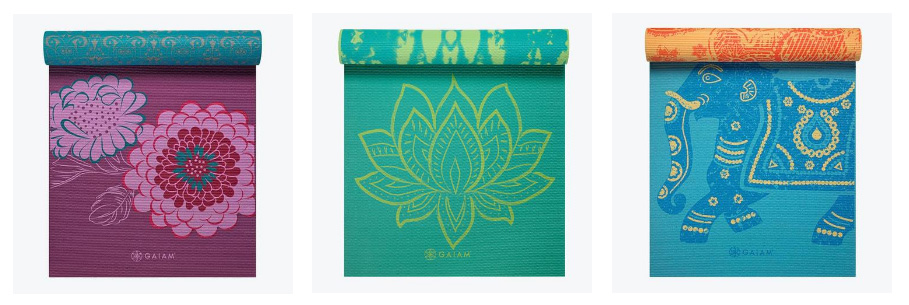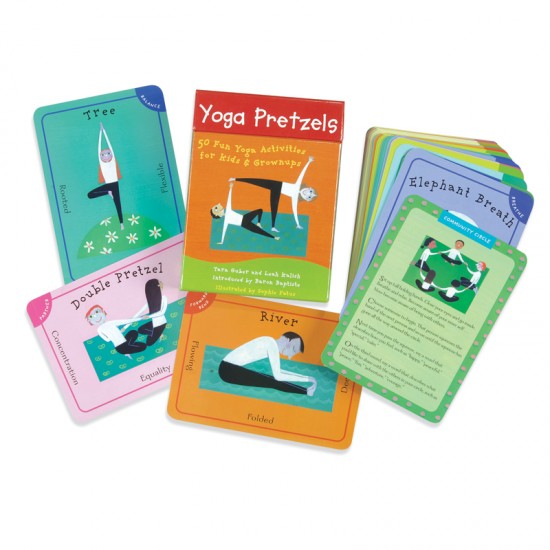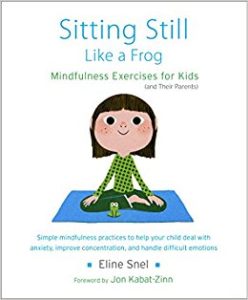Building an At-Home Practice for Kids & Families
One of my favorite things about teaching is running my Family Yoga Workshop. I love to see parents and their children spending time together away from all the day-to-day craziness and simply playing and having fun through movement. It is also wonderful to hear feedback from everyone after class about how much the kids enjoyed learning yoga. Parents are often most excited about having new ways of helping their children deal with stress, anxiety, restlessness and sleep issues and the kids are excited to learn a new form of movement, meditation and breathing exercises. I’m often asked about ways the children can continue to explore yoga outside of class. Creating space and time for a home practice is a great way for kids to learn more about yoga philosophy and poses and can also provide a means for families to come together for a much-needed break to reconnect.
The ideas and resources listed here are some of our family’s personal favorites and others are products I recommend as worth trying. The yoga world is filled with an abundance of books, DVDs, apps and games that offer multiple pathways for exploration based on your child’s personal interests. These are a few ways to get started.
Create a special space that provides a sensory experience
Creating a yoga space in your home does not need to involve cleaning out an entire room or building an addition just for yoga. A special space might simply be a corner or a spot in a room that is large enough for a yoga mat or two and some inspiring items. If your child enjoys listening to music, meditations or guided visualizations, consider a small Bluetooth speaker that can pair with a yoga app or album you’ve downloaded. A small basket or bookshelf can hold books or card packs of yoga poses or stories. Let them select some essential oil mists or roll-ons that they find relaxing or energizing to be used during their practice. They might also have a small lamp or white string lights to help set a soothing tone in the evening. If there are DVDs or online yoga programs they are using, they could use a laptop or tablet for viewing these or locate the space close to a television.
Although you do not need to have a mat to do yoga, I do recommend allowing kids to pick out a mat on their own and use this for their practice. Regardless of where they are doing yoga, their mat can always go with them and provide their own sacred space. Practically speaking, their mat provides a sanitary surface (as long as they keep it clean!) and one that offers better grip when they are building a sweat. You can grab a mat in stores like Target or Dicks or online on Amazon. Gaiam is a great place to look for mats in a variety of patterns and colors. There is no need to invest a lot of money in a mat. Kids just need the basics.

Gaiam Yoga Mats
Card Packs & Games
One of our favorite ways to do yoga as a family has always been card packs such as Yoga Pretzels and Yoga Planet by Tara Guber and Leah Kalish. There are a variety of card packs on the market that highlight different poses on each card, along with breath and meditation practices and partner poses. Additionally, these packs often include recommended games or sequences the kids can do themselves or with their friends and family. Yoga dice offer another creative way to explore the poses. The dice can be used to play a variety of games together or can be used by kids to help them craft a new sequence for their own practice. For younger kids, two creative approaches to incorporating yoga into game play include the Yoga Spinner Game and Memory Yoga by ThinkFun.

Books
To say there is no limit to the number of yoga books on the market is an understatement, but the one I recommend most highly for both parents and kids is Yoga for Children by Lisa Flynn. Lisa is the founder of ChildLight Yoga and Yoga4Classrooms. The book provides a thorough outline of the benefits of children participating in a yoga program or home practice and descriptions of more than 200 yoga poses, meditations, and activities that they recommend for children between the ages of two and twelve.
Another great reference for parents and kids is Little Flower Yoga for Kids by Jennifer Cohen Harper. I appreciate the approach that Jennifer takes in organizing the sections of the book into connect, breathe, move, focus and relax. Both this book and Yoga for Children also explore the benefits that yoga offers for children with ADHD, autism and other behavioral issues.
Yoga for Kids (and their Grown-Ups) by Katherine Ghannam is a beautifully illustrated book that is written in kid-friendly language and provides an overview of poses, activities and meditations that children can do on their own or with friends and family. Katherine has also included icons with each item to indicate whether it is energizing, calming, rejuvenating, grounding and/or strengthening. She provides a series of recommended sequences at the end of the book as well as an illustrated yoga library for easy reference on each of the poses.
 There are numerous picture books that are great for younger kids, but I must confess that I love the story and engaging illustrations in I Am Yoga and I Am Peace: A Book of Mindfulness, by Susan Verde and Peter H. Reynolds, for the entire family. Both books beautifully capture the true essence of what yoga should be all about – cultivating love and joy from the inside out.
There are numerous picture books that are great for younger kids, but I must confess that I love the story and engaging illustrations in I Am Yoga and I Am Peace: A Book of Mindfulness, by Susan Verde and Peter H. Reynolds, for the entire family. Both books beautifully capture the true essence of what yoga should be all about – cultivating love and joy from the inside out.
The last book I must mention is one I recommend repeatedly for introducing guided visualization as a way to help kids of all ages relax and find calm. Sitting Still Like a Frog: Mindful Exercises for Kids (and their Parents), by Eline Snel, outlines the benefits of and ways to incorporate mindful practices into our daily lives to help with difficult emotions, stress, trouble sleeping, fear and anxiety. There is a CD included with the printed book that I downloaded to iTunes to use on our devices, but there is also an audio version of the book available which would save you that step. The guided visualizations are narrated by Myla Kabat-Zinn, wife of renowned mindfulness researcher Jon Kabat-Zinn. Myla’s voice is perfect for helping put kids at ease as she describes metaphors like a conveyor belt of worries or a personal weather report for what’s happening in their minds. I like the guided visualizations so much that I have shared them with teens and adults as well who have agreed they were very helpful.
Yoga and mindfulness are incredible practices to adapt at an early age, but most importantly, at any age. I hope that you will find some of these ideas and products helpful in building a home practice. I would love to hear if you have other items you or your kids have used and found beneficial. Namaste!


